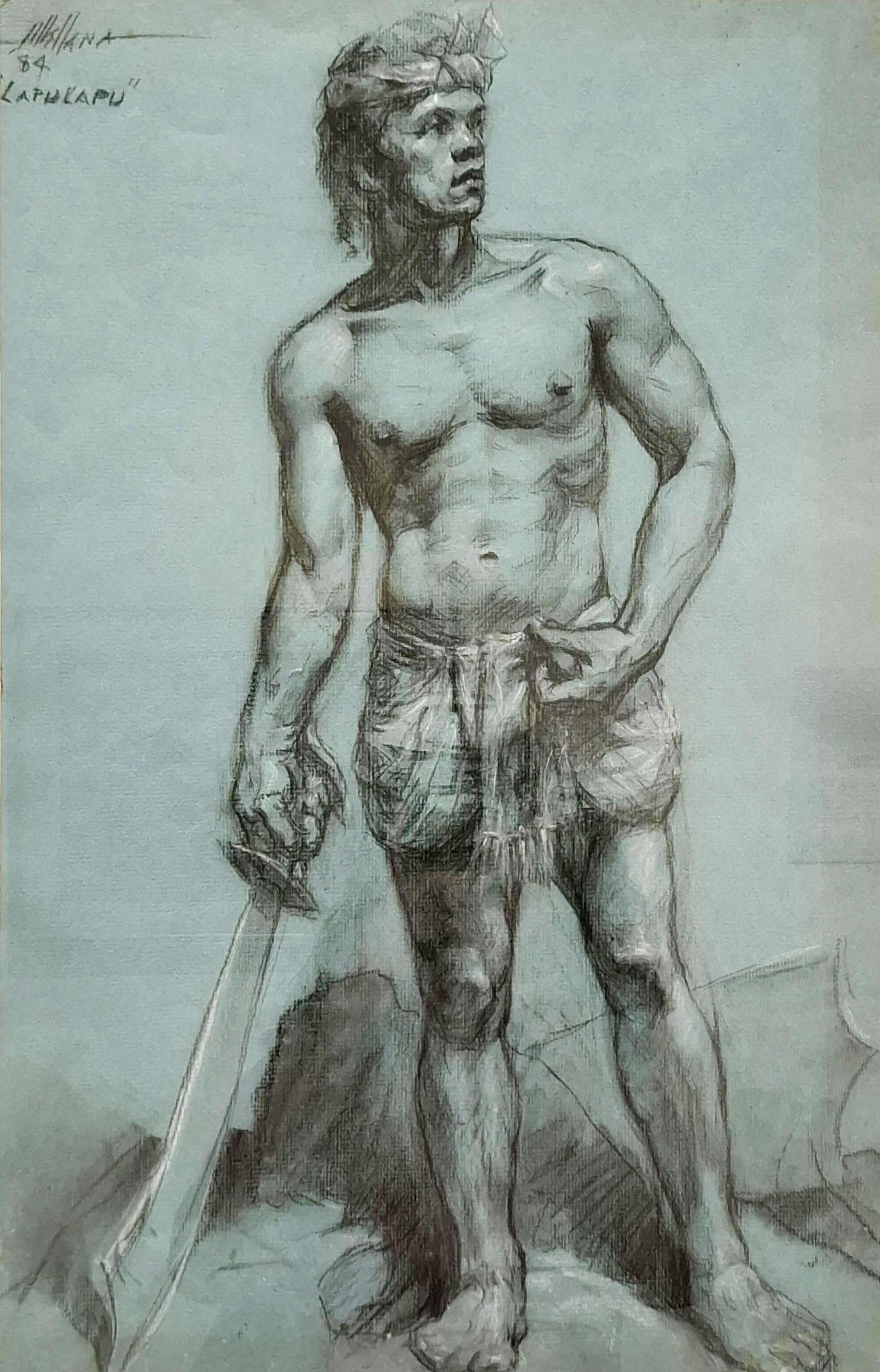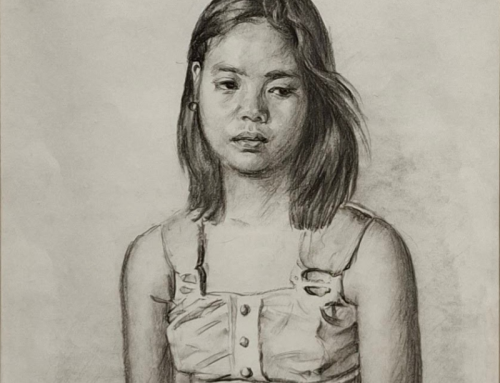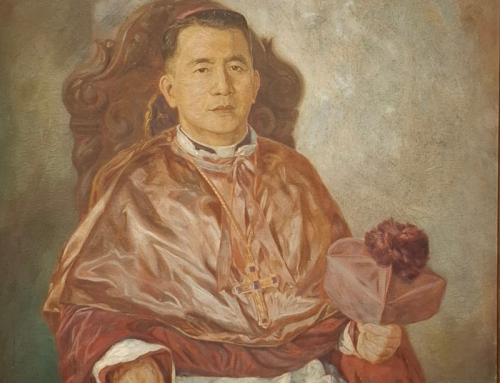
The Study of Lapu-lapu
Medium
Charcoal on Paper
Dimensions
64 x 46.3 cm
Year Completed
1984
Location
Private
Collection Notes
National Museum of the Philippines Cebu - Abellana Family Collection
Over 500 years ago, Datu Lapu-Lapu’s men slayed the first colonizers in the Battle of Mactan. Today, a perennial symbol of Filipino bravery and resistance, one of the many monuments honoring him is a striking golden statue that stands at the Cebu Capitol grounds, sculpted by Carcaranon Dr. Ramon Abellana and possibly drafted by his brother Martino.
Though never truly confirmed, a 1984 charcoal drawing lends some credence to the Dean of Cebuano Painters’ indulgence in a brotherly collaboration. Like the sculpture, “Lapu-Lapu’s” posture in the sketch is casual and somewhat askew, nevermind the weighty Moro Gayang sword in his right hand. His left hand hovers lightly over his waist, changed into a tight fist for the sculpture. His minimal garments show every sign of his kingly status: the pudong of a maginoo and a modest bahag that otherwise exposes a warrior’s well-toned body. Lapu-Lapu’s juvenile face in the sketch, different from the stern, older appearance in the sculpture, likely belonged to a young relative who modeled for Martino.
The proud Bisaya he was all his life, Martino indeed depicts the first Filipino hero standing “proud and dauntless”. It is not too far-fetched that he would have collaborated with his brother Ramon in this particular project, the two Abellanas’ legacies similarly a testament to Carcaronon pride. Regardless If the sketch was for the sculpture or not, having Martino Abellana’s work linked to two great figures in the Bisaya pantheon signifies the interwovenness of a community continually fighting for its self-determination.



